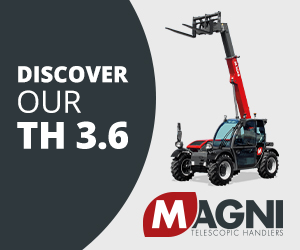FEM Publishes Anticipated Light Crane Systems Document
The European Federation of Materials Handling (FEM) product group Cranes and Lifting Equipment Sub-Group Lifting Equipment (EOT) and Hoisting Equipment—Project Light Cranes has published its FEM 9.771 Light Crane Systems document, prepared by Europe’s leading manufacturers of light crane systems.
Juha Erikkilä, chairman, Erikkila Group, and chair of the Working Group Light Crane Systems FEM Rule 9.771, said: “This might be one of last rules ever from FEM product group Cranes and Lifting Equipment Sub-Group Lifting Equipment (EOT) and Hoisting Equipment. Today, standards in our industry come out of CEN 147. Material handling industry presence in Brussels is based on FEM. FEM’s role is to influence EU legislation and CEN standards. Also, market surveillance and relationships with counter associations in other continents has become an important part of FEM work.”
The document gives added value to the European Standards referring to cranes, runways and manipulators with focus on the special requirements and hazards of light crane systems. The document covers hand-operated or power-driven cranes made of steel or aluminium, specifically looking at articulated or enclosed underslung monorails and cranes, and stationary slewing wall, and column-mounted jib cranes made of I-beam or enclosed profile.
The document gives added value to requirements which are not covered by EN 14985 Cranes—Slewing Jib Cranes; EN 13157 Hand-powered lifting equipment; and EN 15011 Cranes—Bridge and Gantry cranes. It does not include requirements for the lifting of personnel.
Likewise, the specific hazards due to potentially explosive atmospheres, ionising radiations and operation in electromagnetic fields beyond the range of EN 61000-6-2 and the directives 94/9/EC and 99/92/EC are not covered by this document.
FEM 9.771 Light Crane Systems, which is around 30 pages, is available for €48 at FEM’s online shop at fem.vdma-verlag.de.
The European Federation of Materials Handling (FEM) was founded in 1953 to represent, defend and promote European manufacturers of materials handling, lifting and storage equipment. The membership currently consists of 13 national committees from European countries.
Exports on the rise
Meanwhile, the European Federation of Materials Handling (FEM) has said in its 2010 material handling statistics press release, “exports on the rise”. European materials handling production value remained stable in 2010 at €54 billion. Exports outside the EU increased by 7 percent while extra-EU imports were up by 18 percent.
FEM 2010 statistical data thus confirms the strengthening of the European materials handling industry’s external dimension together with a continuous increase of non-EU product penetration on the internal market.
Production value remained stable and even slightly decreased (-5 percent) if one excludes maintenance and repair. Such a result can be explained by the combination of two factors: first, domestic demand, which still represents the largest share of materials handling equipment sales, dropped by 8 percent to €30.5 billion (-25 percent since 2005); second, many materials handling products require a relatively long lead time between order and production. Therefore, a substantial share of the 2010 production value resulted from low orders in 2009.
After a sharp decrease in 2009, exports rebounded by 7 percent to reach €19 billion, thus representing 42 percent of the production value—twice as much as in 2005. Imports increased by 18 percent and accounted for almost 15 percent of the domestic demand. They almost tripled their share since 2005.
Olivier Janin, FEM secretary general, said: “Beyond hard figures, the trends revealed by these statistics comfort FEM in its political priorities, and more particularly two of them: trade and market surveillance.
“Indeed, the increase of exports in the production value makes it even more important to remove trade and access barriers on certain foreign markets through Free Trade Agreements. On the other hand, more and more equipment originating from third countries is put on the EU market: market surveillance must ensure that such equipment complies with EU regulatory requirements to safeguard users’ safety and ensure a level playing field.”











